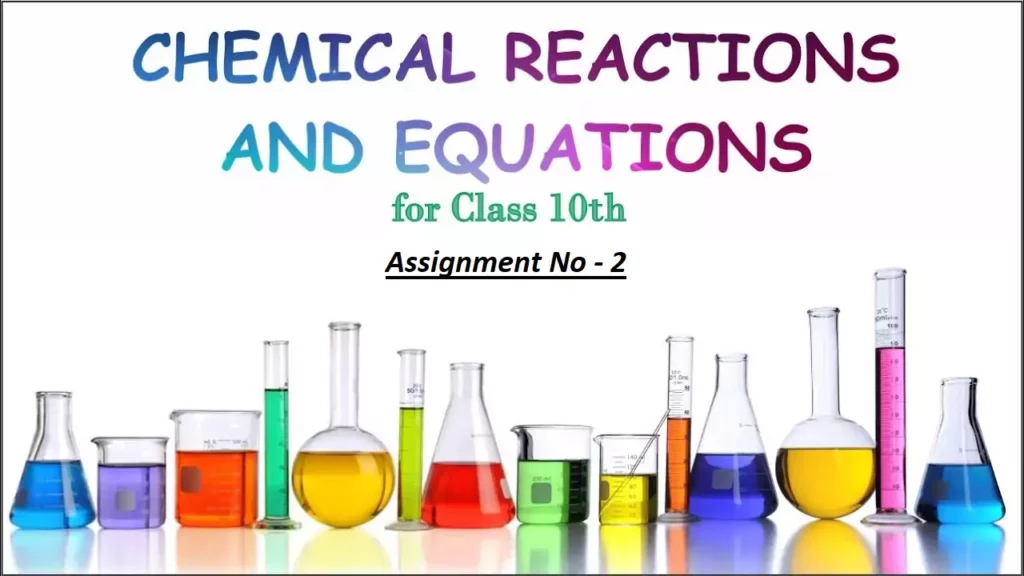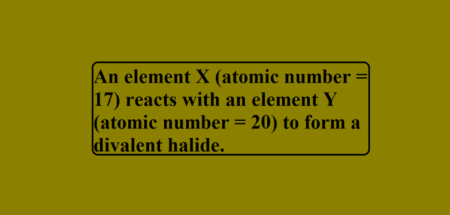2nd –Assignment Chemical Reactions and Equations
2nd – Assignment Chemical Reaction and Equation which is a subjective assignment ensure that readers will be able to get a proper idea about the types of subjective questions asked in exams.
16. Why should a magnesium ribbon be cleaned before burning in air?
17. Write the balanced chemical equation with state symbols for the following reactions?
18. A solution of a substance ‘X’ is used for whitewashing.
(a) Name the substance ‘X’ and writes its formula.
(b) Write the reaction of the substance ‘X’ named in (a) above with water
19. In the refining of silver, the recovery of silver from silver nitrate solution involved displacement by copper metal. Write down the reaction involved.
20.What do you mean by a precipitation reaction? Explain by giving examples.
21. A shiny brown coloured element ‘X’ on heating in the air becomes black in colour. Name the element ‘X’ and the black coloured compound formed.
22. Why do we apply paint on iron articles?
23. Oil and fat containing food items are flushed with nitrogen. Why?
24. Write a balanced chemical equation with state symbols for the following reactions.
(i) Solutions of barium chloride and sodium sulphate in water react to give insoluble barium sulphate and the solution of sodium chloride.
(ii) Sodium hydroxide solution (in water) reacts with hydrochloric acid solution (in water) to produce sodium chloride solution and water.
25. Balance the following chemical equations.
(a) HNO3 + Ca(OH)2 → Ca(NO3)2 + H2O
(b) NaOH + H2SO4 → Na2SO4 + H2O
(c) NaCl + AgNO3 → AgCl + NaNO3
(d) BaCl2 + H2SO4 → BaSO4 + HCl
Q 26. What is the Colour of magnesium?
Q 27. Why it is Recommended always to use Dilute Acids?
Q 28. What is Wafting gas?
Q 29. Why AgCl kept in a Black colour of Bottle?
Q 30. Give some examples of more Photolytic Docomposing Substances and their Relations?
Q 31. Which Reaction is Used for Black and White Photography?
Q 32. Why does the Iron nail become brownish in colour and the blue colour
of copper sulphate solution fade?
Q 33. Write the chemical formula for the following.
Ammonium chloride, ammonium nitrate, chlorine, dilute hydrochloric acid, iron, lead nitrate, manganese (IV) oxide, silver nitrate, sodium nitrate, sodium nitrite, Calcium Carbonate, Calcium Hydroxide, Sulphuric acid, Nitric acid, Copper Sulphate, Calcium Sulphate.
Q 34. Fill in the following about reactivity series of metal: The …………………. Metal replaces the ………………. Metal from its salt solution.
Q 35. Which of the following is not the necessary condition for rusting (i) Presence of oxygen (ii) Presence of catalyst (iii) Presence of moisture
To get questions click the link below
https://sciencemotive.com/class-10/answers-to-assignment-chemical-reactions-and-equations/
Assignment 1 – Chemical Reactions And Equations | Class 10th
Answers Assignment 1 – Chemical Reactions and Equations


